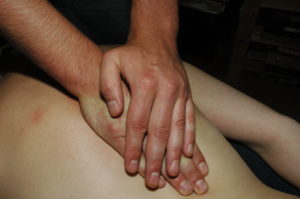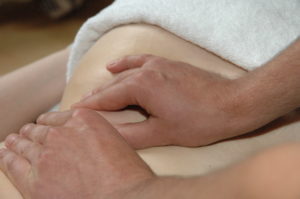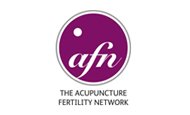Myofascial Release in London
Are you looking for a myofascial release therapist in London? Don’t look further than Acubody.
At Acubody, we specialise in myofascial release and our myofascial release therapist in London is one of the best. They carry a degree level training with 20 years of experience.
Myofascial release is considered a neuromuscular technique since research is showing how its effects are due to nervous system reflexes.
Effects like softening of the muscles, mobilising and freeing up of the connective tissue are a reaction from the stimulation of specialised receptors housed in the fascia.
It is a useful therapy for dealing with all sorts of restriction in the muscles and tissues, it has an amazing capacity for relieving muscle pain, and can help restore postural imbalances. With Acubody, you will get the service from the best myofascial release therapist in London.

Myofascial release therapy involves pressure on the body tissues in a specific direction, slowly building up to a point of resistance. The pressure is then maintained and the tissue allowed to relax, effectively releasing tension in the muscle unit.
It is currently thought that the directional pressure applied induces the peripheral nervous system to release the muscle. It can be effective in any problem featuring tight muscle tissue, and is very effective in relieving myofascial (i.e. muscular) pain.
Our myofascial release therapist in London often use active participation of the clients while performing this technique in order that they become more aware of their bodies and ways of moving.
The movement is initially guided, but clients often instinctively find movements which feel good and are encouraged to use them.
Movement also helps the release of the tight tissues by encouraging blood flow and stimulating new movement patterns. This crosses over into what are called active release techniques.

Myofascial release techniques have grown and developed from the work of Ida Rolf in the 1920’s who called her therapy structural integration, but which was labelled Rolfing after her. There are a number of styles and schools of this work. You can talk to our myofascial release therapist in London during consultation to understand the techniques we use.
Additional benefits offered by myofascial release
Muscle relief is not the sole benefit of myofascial release. Our myofascial release therapist in London are highly trained, and through the implementation of different techniques, they make sure you enjoy the following benefits:
- The therapy improves the range of motion by releasing restrictions in the fascia. Myofascial release enhances the motion in your joints and ensures you enjoy pain-free, more efficient movement.
- Our myofascial release therapist will closely work with you to reduce muscle tension and enhance flexibility so you can enjoy improved athletic performance.
- The therapy triggers a relaxation response that helps in reducing anxiety and stress and boosts one’s overall well-being.
- By reducing muscle tension and ensuring a calm state of mind, our myofascial release therapist can guarantee you improved quality of sleep.
- Injury is prevented because this therapy addresses the imbalances in the muscles and enhances flexibility. Also, it prevents future injuries.
Acubody’s approach to myofascial release
At Acubody, we work with experienced and highly trained therapists. We offer tailor-made treatment plans to address specific needs and meet specific goals. If required, our therapists combine this therapy with other techniques like massage and acupuncture. We guarantee a holistic approach to ensure your well-being is boosted. Our treatment starts with a consultation to analyse your specific requirements and health issues.
Are you considering myofascial release in London?
If you are experiencing limitations in your movement, stiffness or muscle pain, myofascial release therapy will be a valuable addition to your wellness routine. You can come to Acubody to have our myofascial release therapist in London assess your specific needs and personalise the treatment to help you achieve the best results.
For Myofascial Release Therapy in London WC1 click here
References and further reading:
Myers, T (2009) Anatomy Trains: Myofascial meridians for manual and movement therapists London, Churchill Livingstone.
Schleip, R (2006) Fascial plasticity: a new neurological explanation Journal of Bodywork and Movement Therapies.
Schultz, R.L. & Feitis R. (1996) The Endless Web: Fascial anatomy and physical reality, Berkeley, North Atlantic Books.







